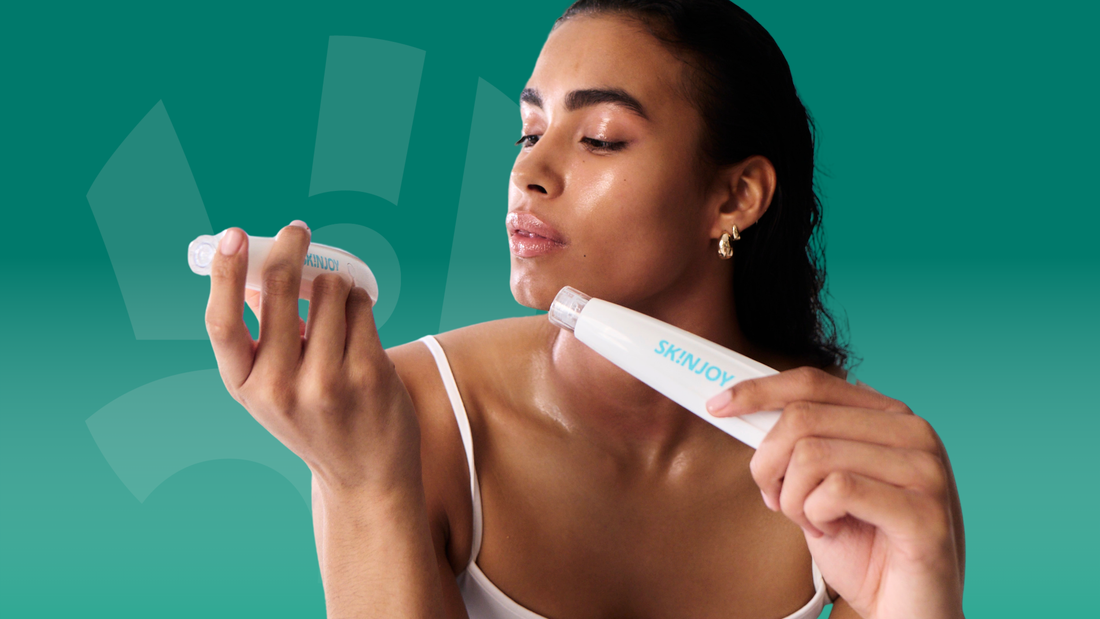
What’s the Difference Between Salon Microneedling and At-Home Use with the LUMO WAND?
Share
Microneedling has earned its spot as a trusted skincare treatment, both in-clinic and at home. Whether you’re investing in a professional course at a salon or incorporating a handheld device into your weekly routine, the goal is the same: smoother texture, brighter tone, and healthier-looking skin.
But while the intensity and depth of professional microneedling deliver powerful results, at-home devices like the SKINJOY LUMO WAND Micro-Needling Device offer a gentler, more frequent alternative that works in harmony with your skin’s natural renewal cycle.
Let’s take a closer look at how these two approaches differ and how they can complement each other depending on your skin goals, lifestyle, and comfort level.
Depth makes the difference
The biggest difference lies in how deep the needles go.
Professional microneedling often uses needle depths of up to 1.5mm. This reaches the dermis, which is the deeper layer of the skin, and yes, that’s the kind of treatment that typically requires numbing cream.
The LUMO WAND Micro-Needling Device, on the other hand, uses a gentle 0.25mm depth, which stays within the epidermis (the top layer of the skin). That means you’re not triggering trauma in the same way, but you’re still creating micro-channels that boost absorption and stimulate your skin’s natural healing processes.

Salon = intensive course | Wand = consistent care
Salon microneedling treatments are usually done in courses of 3, once or twice a year, because they’re quite intense. You’ll need a few days of downtime, and those with sensitive skin or pigmentation issues often need to steer clear.
The SKINJOY LUMO WAND Micro-Needling Device, by contrast, was made for gentle, regular use. You’re essentially working with your skin’s natural desquamation cycle, that’s the process of shedding old skin cells and generating new ones. Think of it as micro-dosing for your skin barrier: more frequent, less invasive, and better for long-term skin health.

No post-inflammatory pigmentation risk
One of the biggest concerns with intense microneedling is post-inflammatory hyperpigmentation (PIH) , especially for people with melanin-rich skin. Because the SKINJOY LUMO WAND Micro-Needling Device works at a shallower depth, there’s less risk of triggering an inflammatory response. This makes it a safer option for ongoing use, even for those with acne-prone, sensitive, or pigmentation-prone skin.
You’re training your skin, not traumatising it
Instead of creating a big “trauma event” that forces your body into repair mode, the SKINJOY LUMO WAND Micro-Needling Device takes a more sustainable approach. Every time you use it, you’re gently signalling to your skin: “Hey, let’s build some collagen, let’s increase nutrient flow, let’s absorb these good serums more effectively.” It’s a smart, repeatable challenge that keeps your skin performing at its best , without overwhelming it.
So which one should you choose?
Here’s the truth: there’s a place for both.
-
In-salon microneedling is ideal for targeted, intensive treatments under professional supervision. It is great for tackling deep scars or prepping your skin for big events (with enough downtime factored in).
-
The SKINJOY LUMO WAND Micro-Needling Device is designed for regular, at-home support. It is a way to maintain results, improve product absorption, and give your skin a boost as part of your normal routine.
INSIDER TIP: In-salon microneedling is generally best suited to the cooler winter months, when the sun is less intense and the risk of post-treatment pigmentation is lower. The SKINJOY LUMO WAND Micro-Needling Device, on the other hand, is gentle enough to be used year-round (even during sweltering Mzansi summers!), making it an ideal choice for consistent, long-term skin support.
It’s not about one being better than the other. It’s about choosing the right tool for your skin, your lifestyle, and your comfort level.
